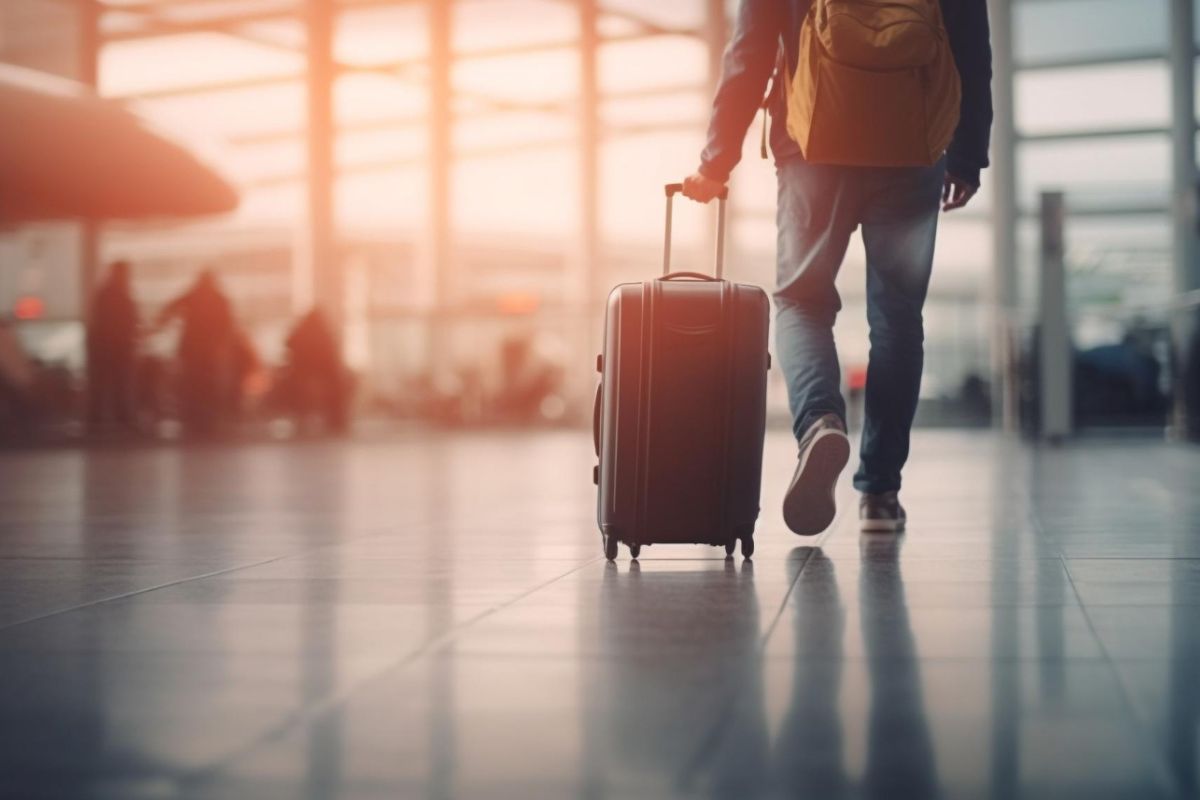If you’re flying domestically within the United States, your packing checklist just got a little easier. The Transportation Security Administration (TSA) has quietly updated its carry-on rules, thanks to a major tech upgrade at airport security checkpoints.
The key driver behind this change? New 3D Computed Tomography (CT) scanners are now being rolled out at major airports across the country.
Advanced CT Scanners Change the Game
Unlike the older X-ray machines, these new CT scanners create detailed 3D images of the contents inside your luggage. That means TSA officers can detect threats more accurately, without having to manually dig through your bag.
The result: More freedom for travelers to carry items that were previously limited, or outright banned, in their carry-on luggage.
Here’s What You Can Now Bring in Your Carry-On (at CT-Equipped Airports)
If you’re flying out of a US airport with CT technology, the TSA will now allow the following in your carry-on bag:
1. Prescription and OTC Medications (Including Liquids)
Travelers can now carry prescribed or over-the-counter medicines in liquid, gel, or aerosol form; no need to limit them to 3.4 ounces.
2. Baby Essentials: Formula, Food, and Liquid Teethers
Breast milk, formula, baby food, and even liquid-filled teethers are permitted in carry-ons; just pack reasonable quantities for your journey.
3. Fresh Eggs in Carry-On? Yes, You Can
You’re allowed to pack fresh eggs in your carry-on, as long as they’re safely cushioned and unlikely to break during travel.
4. Flying with Live Fish? It’s Allowed
Live fish can now be brought in carry-on bags, provided they’re transported in clear, water-filled containers that meet TSA inspection standards.
5. Biological Specimens for Medical Use
Medical or research specimens, like blood or tissue samples, are allowed in carry-ons if properly packed and declared at the checkpoint if needed.
6. Ice Packs and Gel Packs for Medical Needs
Cold packs used to keep medications, breast milk, or other medical items cool are allowed, even in gel form, as long as they’re functional.
7. Wet-Cell Batteries with Safety Precautions
Wet-cell batteries can travel in carry-on bags if packed securely, upright, and in compliance with TSA’s strict safety handling requirements.
8. Duty-Free Liquids in Tamper-Evident Bags
Liquids purchased at duty-free stores are permitted, but only if sealed in official tamper-evident bags with the receipt visible inside.
The End of the 3-1-1 Liquids Rule? Not Everywhere
For years, the TSA’s 3-1-1 rule limited liquids in carry-ons to 3.4oz (100mL) per container. Now, at airports using CT scanners, these limits are relaxed for the items above. However, if your airport hasn’t installed these scanners, the old rules still apply.
These Relaxed Rules Only Apply at Certain Airports
Not all US airports have CT scanners installed yet. If your departure airport is still using older equipment, the original 3-1-1 rule remains in effect. So before you pack:
- Check your airport’s security setup.
- Stick to the standard liquid limits if CT scanners aren’t in place.
- Don’t assume relaxed rules apply everywhere.
U.S. Airports Equipped with TSA CT Scanner Technology (2025 Update)
As TSA upgrades airport security, many major U.S. airports now use CT scanners. These boost safety, speed up screening, and ease carry-on rules. Here’s where they’re already in use.
Notable U.S. Airports with CT Scanners
- Phoenix Sky Harbor International Airport (PHX)
- Boston Logan International Airport (BOS)
- Oakland International Airport (OAK)
- Baltimore Washington International-Thurgood Marshall Airport (BWI)
- Chicago O’Hare International Airport (ORD)
- Cincinnati/Northern Kentucky International Airport (CVG)
- William P. Hobby Airport (HOU)
- Indianapolis International Airport (IND)
- John F. Kennedy International Airport (JFK)
- Los Angeles International Airport (LAX)
- Las Vegas Harry Reid International Airport (LAS)
- Philadelphia International Airport (PHL)
- San Diego International Airport (SAN)
- St. Louis Lambert International Airport (STL)
- Washington Dulles International Airport (IAD)
- Tri-Cities Airport (TRI) in Tennessee
- Miami International Airport (MIA)
- Tweed New Haven Airport (HVN)
- Jackson Medgar Wiley Evers International Airport (JAN)
- T.F. Green Airport (PVD)
- Lebanon Municipal Airport (LEB)
- Bradley International Airport (BDL)
This list is not exhaustive, as the TSA continues to expand installations, with more than 600 CT scanners delivered to over 200 airports nationwide.
Frequent travelers should check with their departure airport, as additional regional and major airports are rapidly joining this technological upgrade.
Why This Matters for Frequent Flyers
This is a big win for anyone traveling with medical needs, baby supplies, or fragile food items.
- Parents no longer need to measure out baby formula into tiny containers.
- People flying with liquid medications or biological samples can do so more easily.
- Travelers with special dietary needs, like fresh eggs or duty-free alcohol, can now pack without worrying about security confiscation.
More than convenience, this shift shows how security processes are evolving. Better tech means less hassle, without compromising safety.
Quick Tips for Flying Under the New TSA Rules
Before you head to the airport, here’s what to keep in mind:
1. Know Your Airport: Look up whether your departure terminal uses CT scanners. That determines what you’re allowed to bring.
2. Pack Smart: Even if something is technically allowed, TSA officers still have the final say. Be ready for extra screening.
3. Follow Duty-Free Guidelines: Liquids from duty-free shops must stay sealed in their official tamper-evident bags.
Final Word
The TSA’s update is a step toward a smoother, more flexible airport experience. But the rules still vary based on your location and what’s inside your bag. So stay informed, pack wisely, and take advantage of the new freedoms, when they apply.
